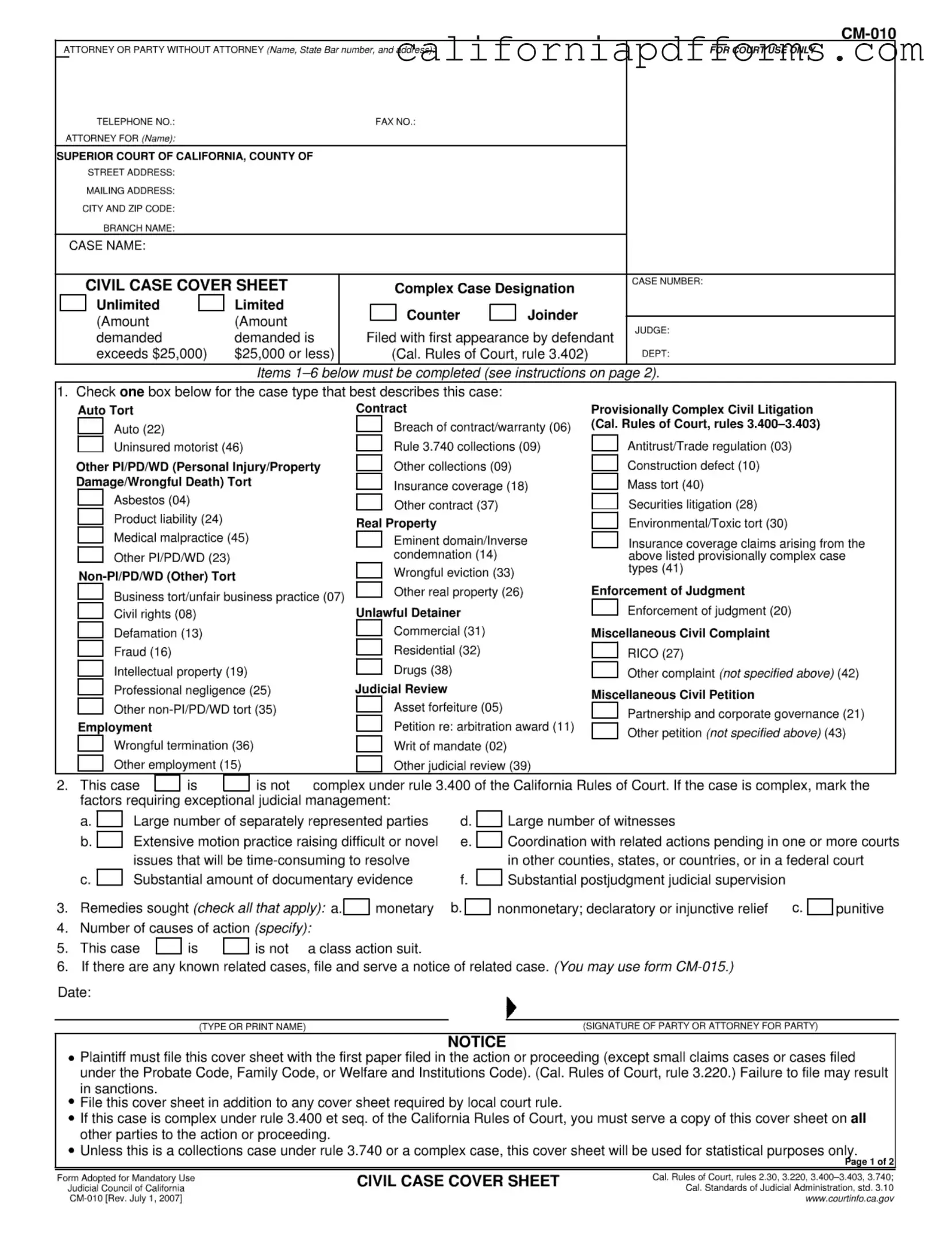Download California Civil Form
The California Civil Form, specifically the Civil Case Cover Sheet (CM-010), is a document required for initiating a civil case in California. This form collects essential information about the case type, parties involved, and the nature of the legal action. Completing this form accurately is crucial for proper case management and compliance with court rules.
To ensure your case is processed smoothly, fill out the California Civil Form by clicking the button below.
Open Your Form Online
